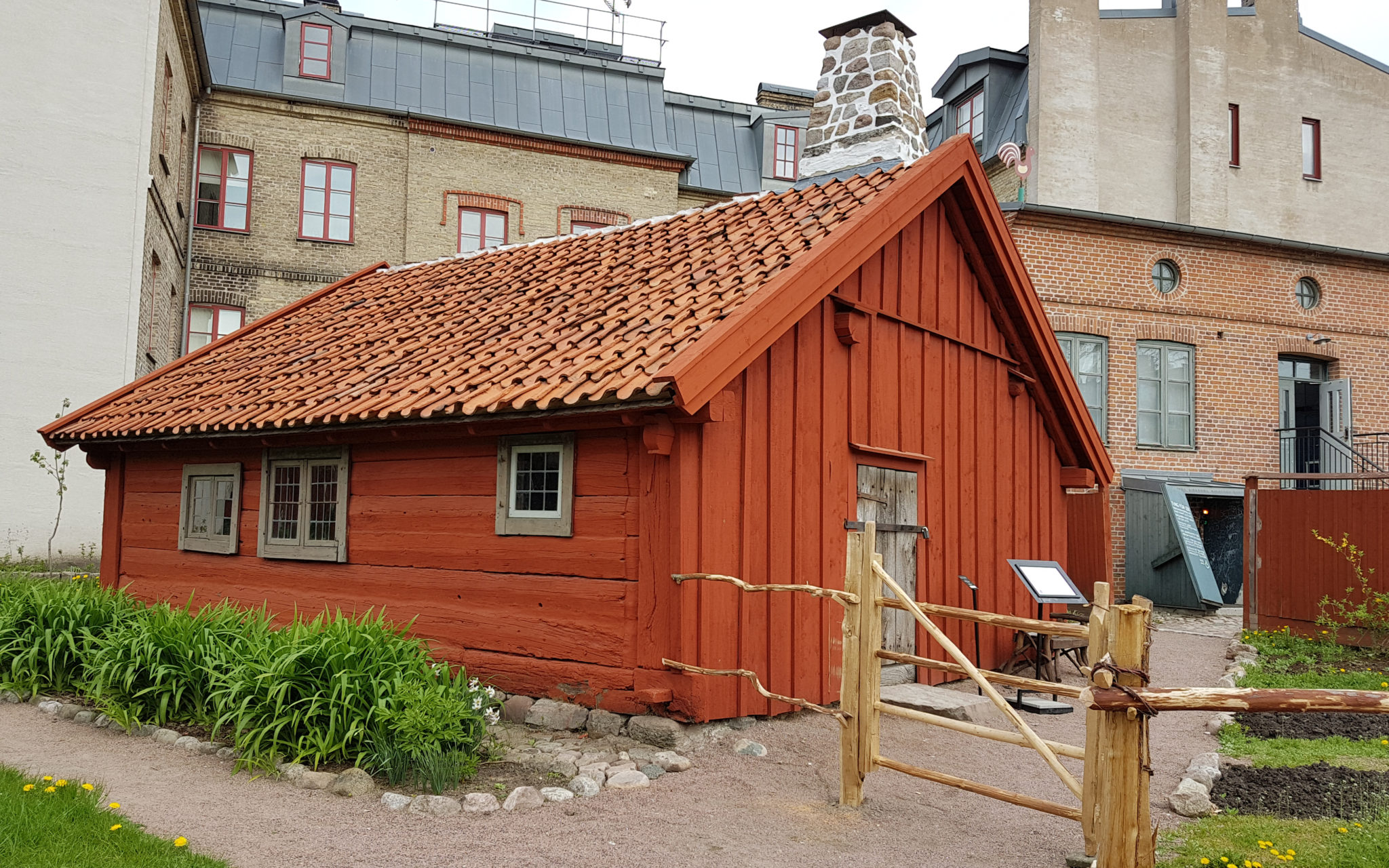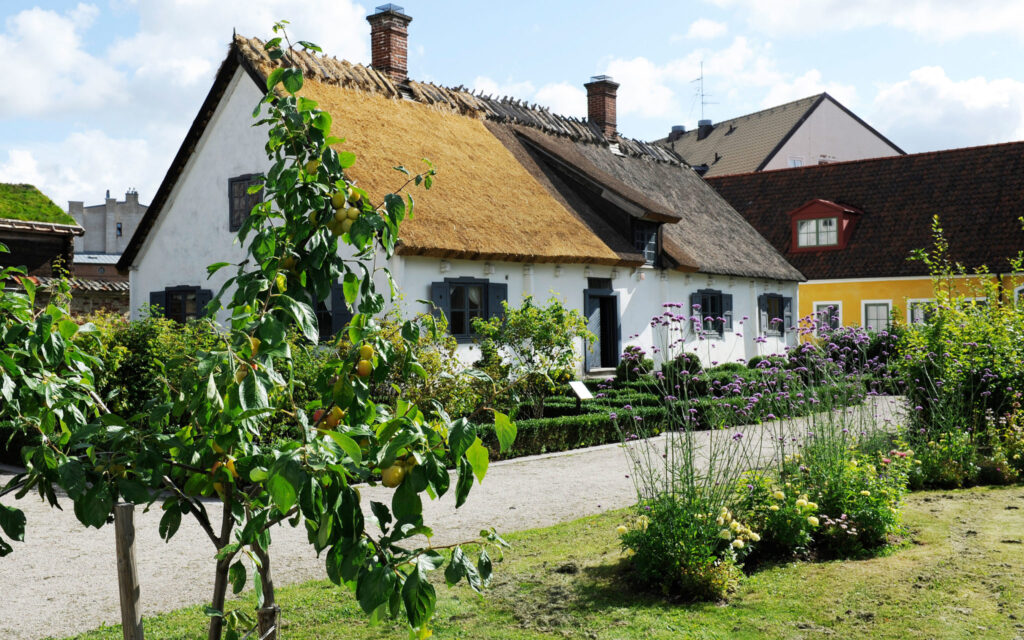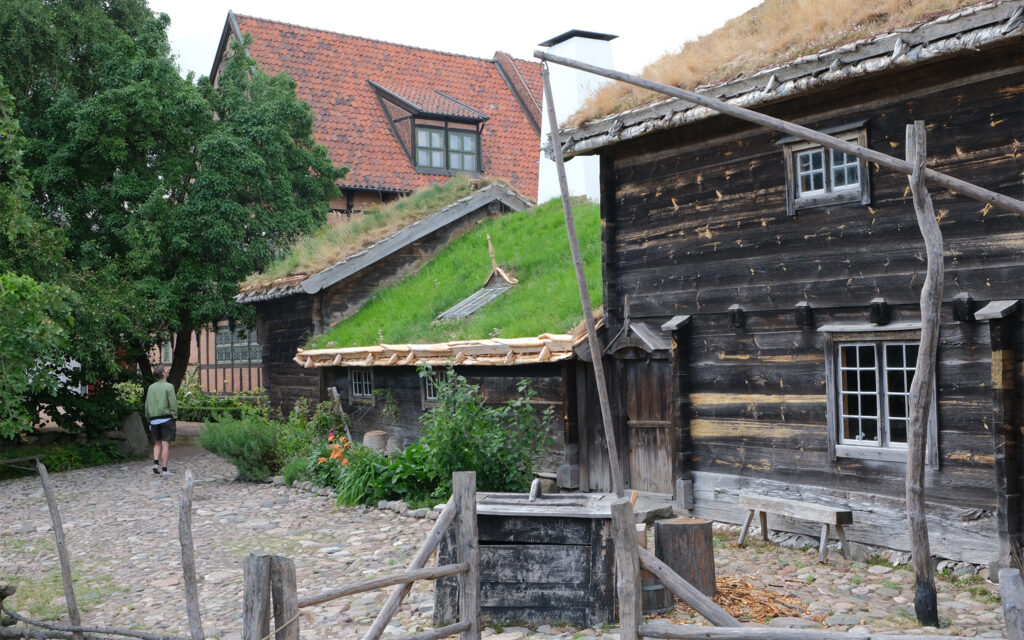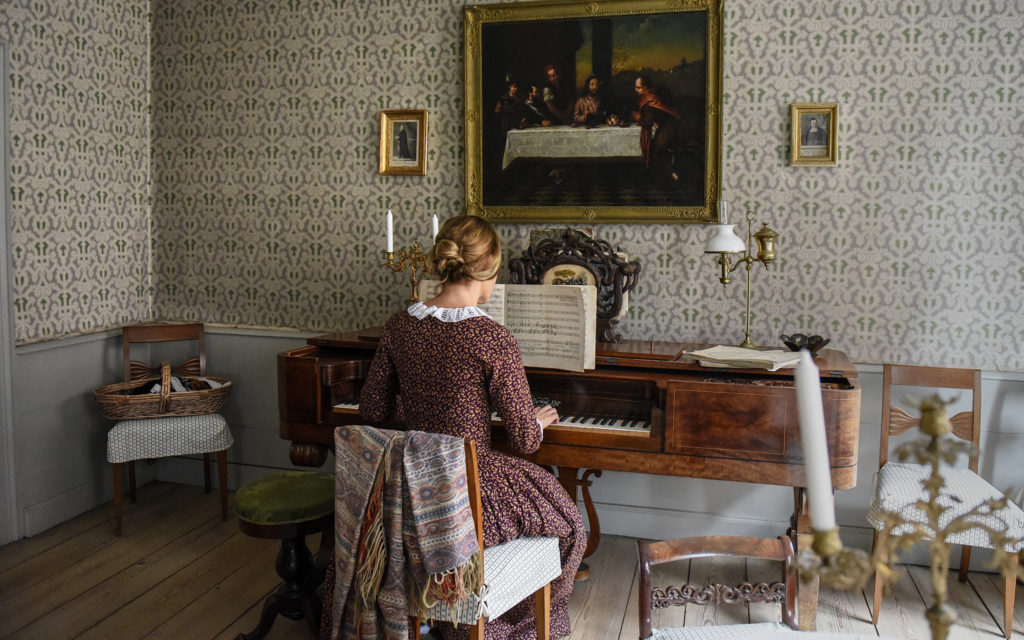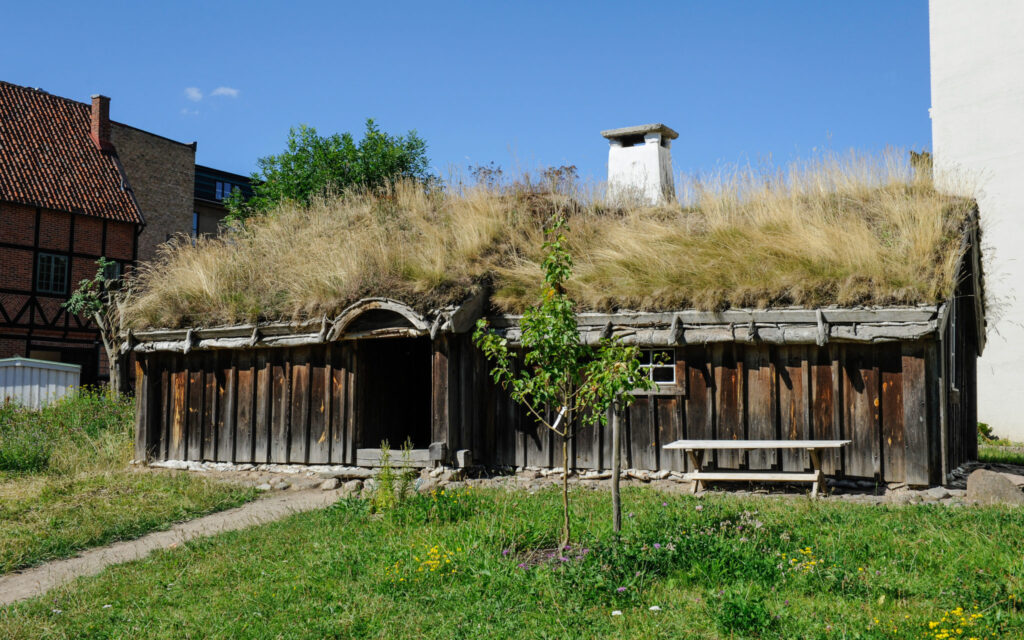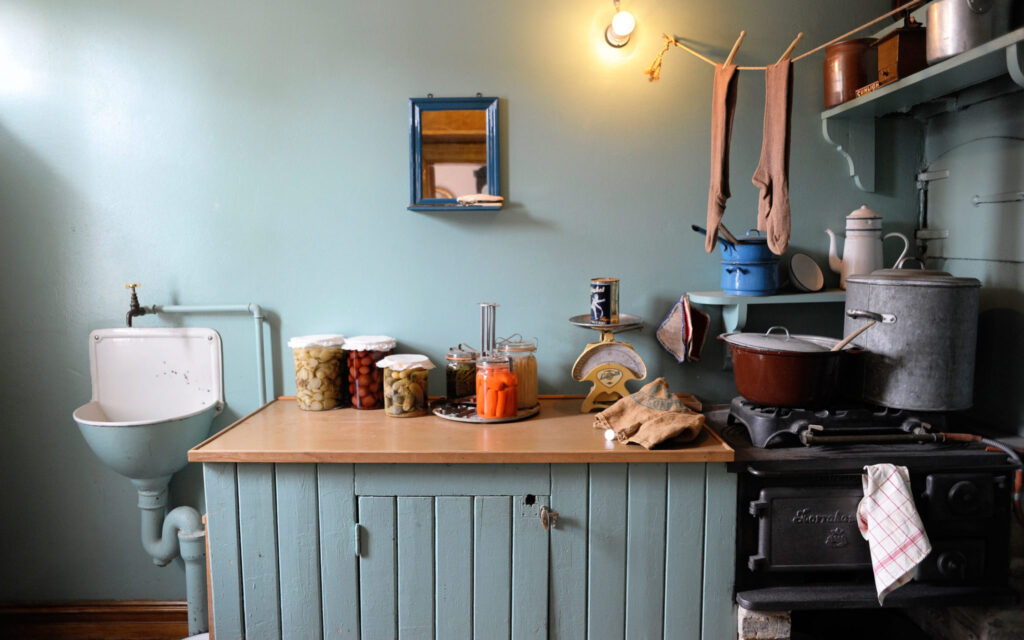Welcome to the red cottage that used to be part of a farm in the district of Onsjö in central Skåne (Scania). Inside, you get an idea of what life in a leasehold cottage might have looked like in 1850. At that time, the widow Gunilla Andersdotter lived here with her son, Anders, who was 25 years old and deaf. Gunilla’s husband, Sven, had passed away a few years earlier.
The first room you enter is a combined hallway and kitchen. Food was cooked over the open fire. Plates, jugs and other household items are neatly lined up on the shelves.
Gunilla and Anders lived in the cottage on a kind of leasehold agreement. The agreement meant that the family could remain in the house after selling the farm, and the new owners were obligated to provide them with things like food, milk and firewood. Their home was simple, but they were not considered poor.
In the all-purpose main room, it looks like they are about to sit down to a meal. Bread and porridge have been prepared, as well as goutweed stewed with onions.
Close to the entrance is a cast-iron stove. Can you find it? It served as a radiator and was regarded as quite the luxury item. It is lit from the hallway, to keep the smoke and soot away from the main room.
The slightly odd bench on the far side of the table is a carding bench. It gave Gunilla a bit of extra support when she was carding wool. She then used the spinning wheel to turn the wool into yarn. The large wooden wheel was pushed using a treadle.
Mother and son stayed on the leasehold agreement until 1865, when Gunilla died at the age of 83. Anders, who was 40 years old at the time, remained in the cottage for another few years.
Further reading:
The booklet Kulturen Open-Air Museum provides more information about the Onsjö Cottage and the other buildings included in this tour. It is available in the museum shop for 60 SEK.
